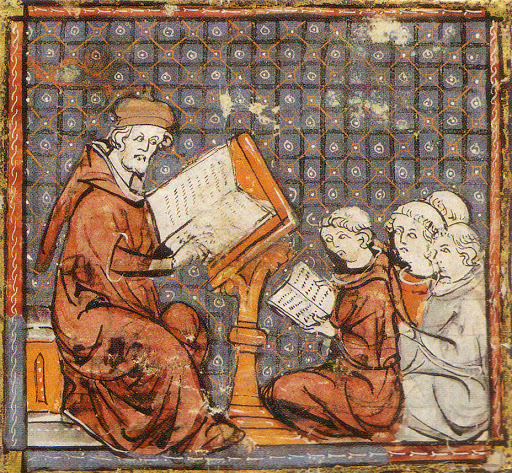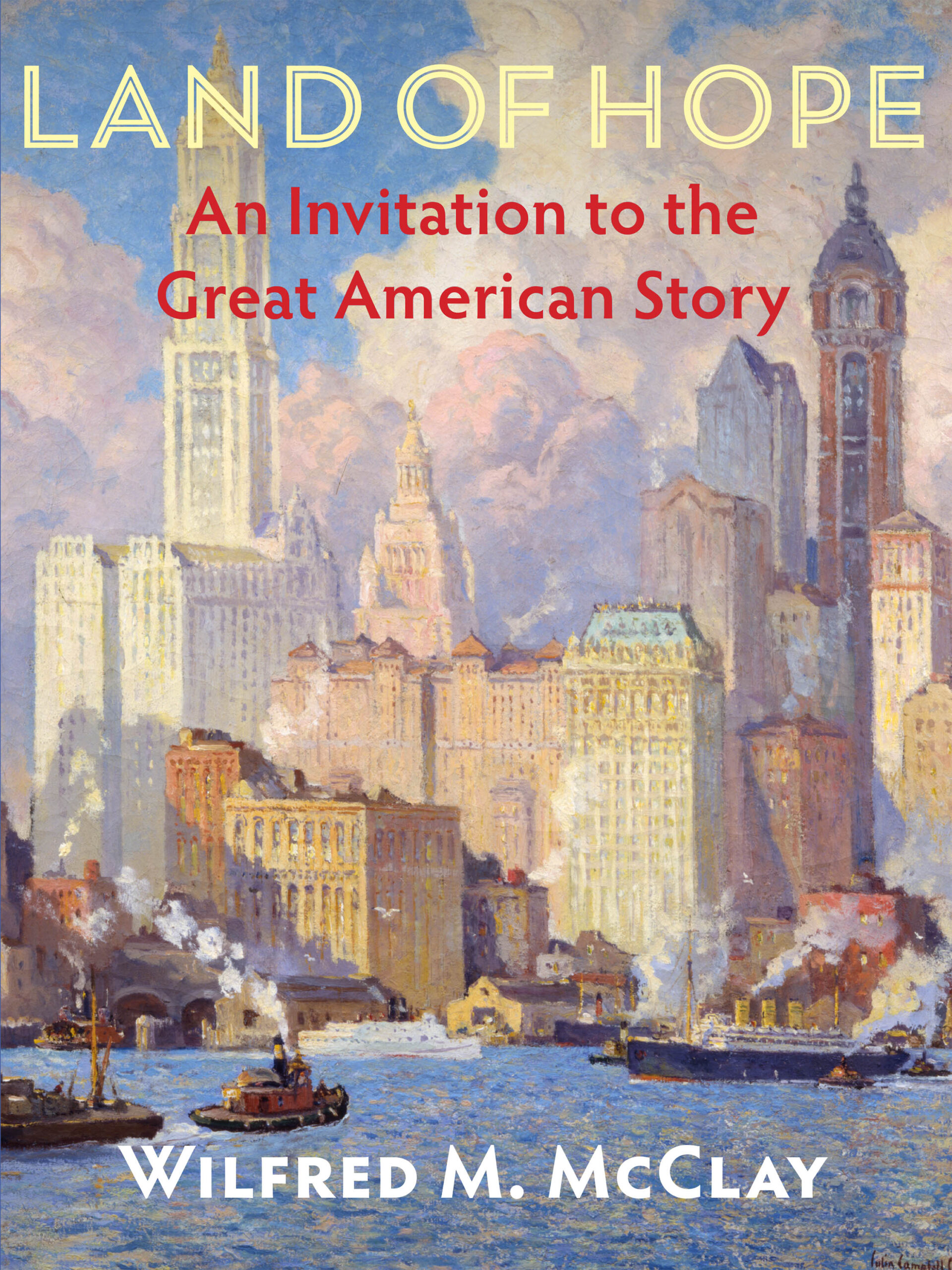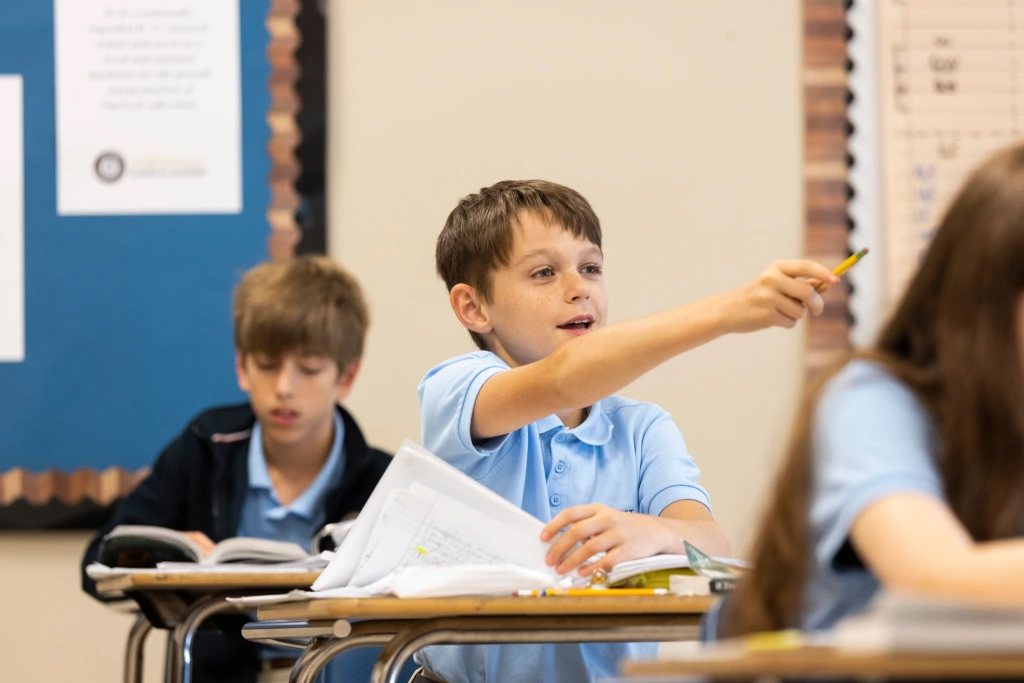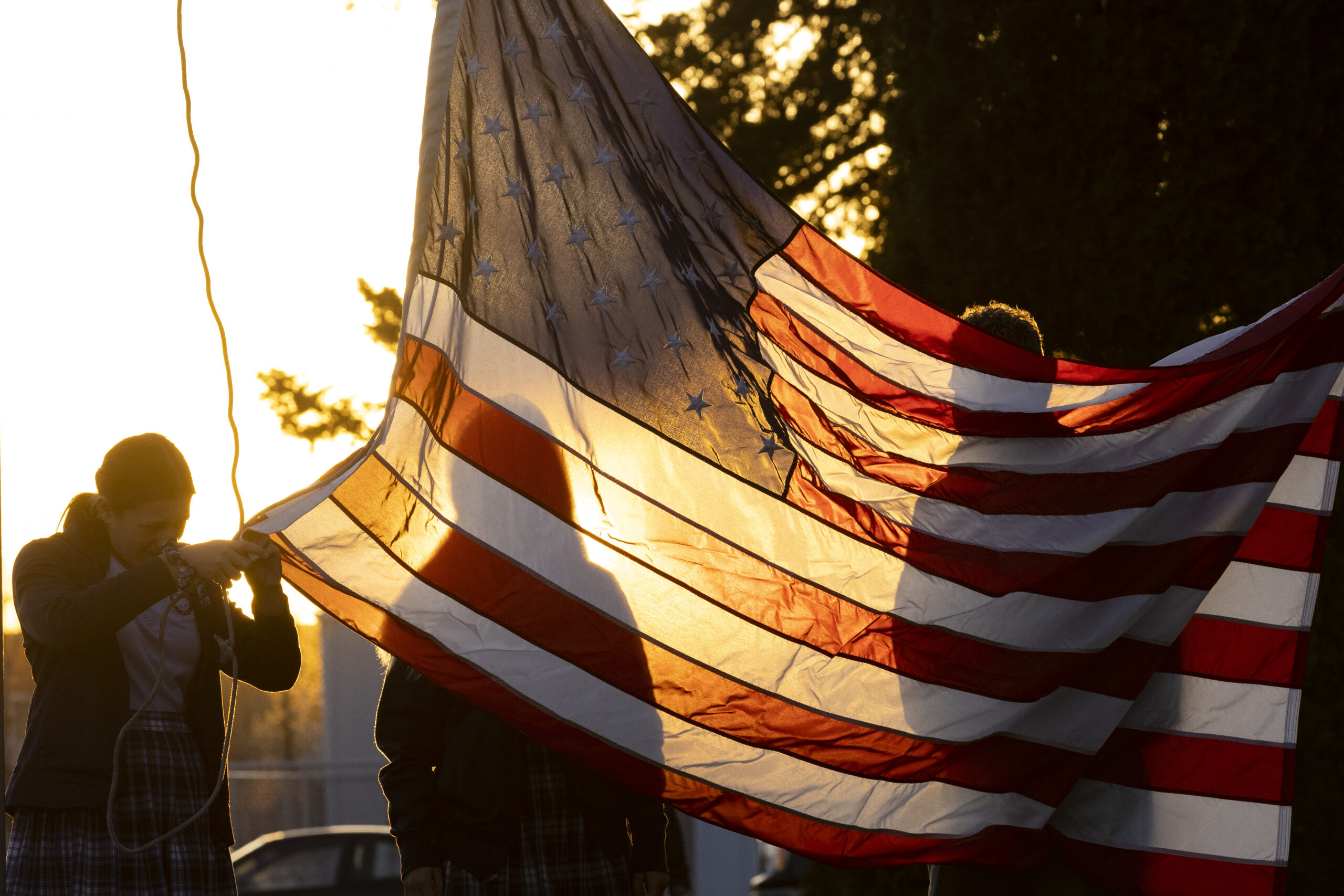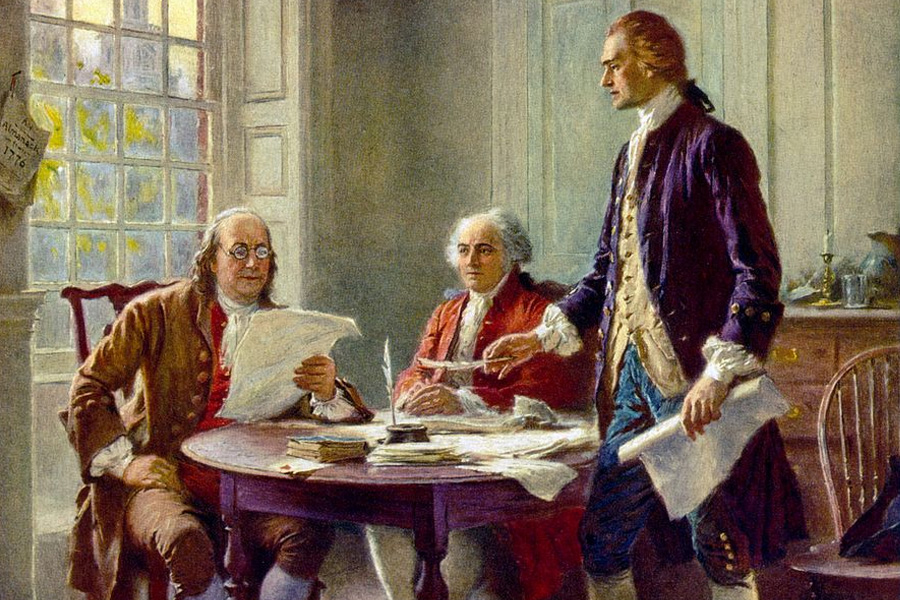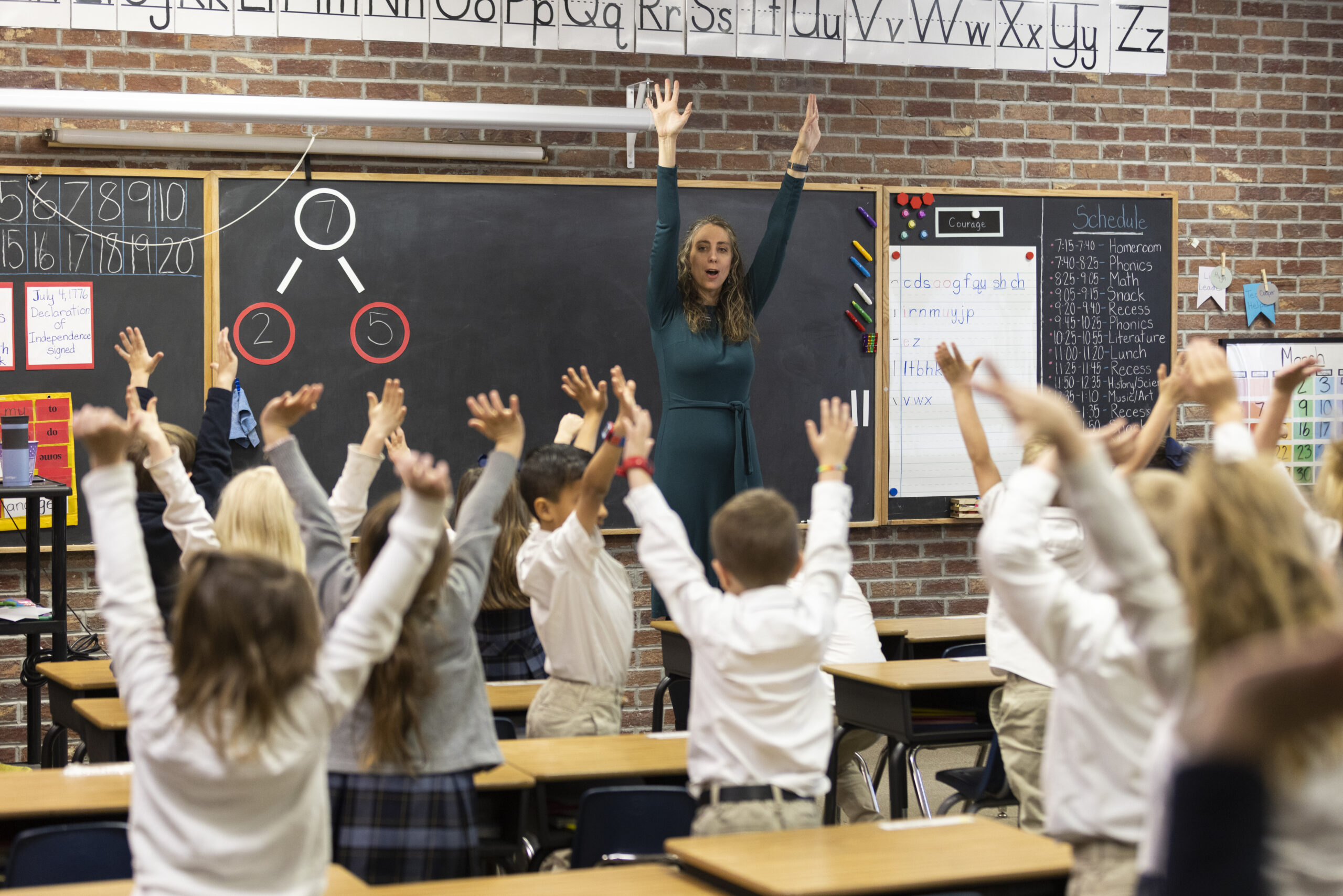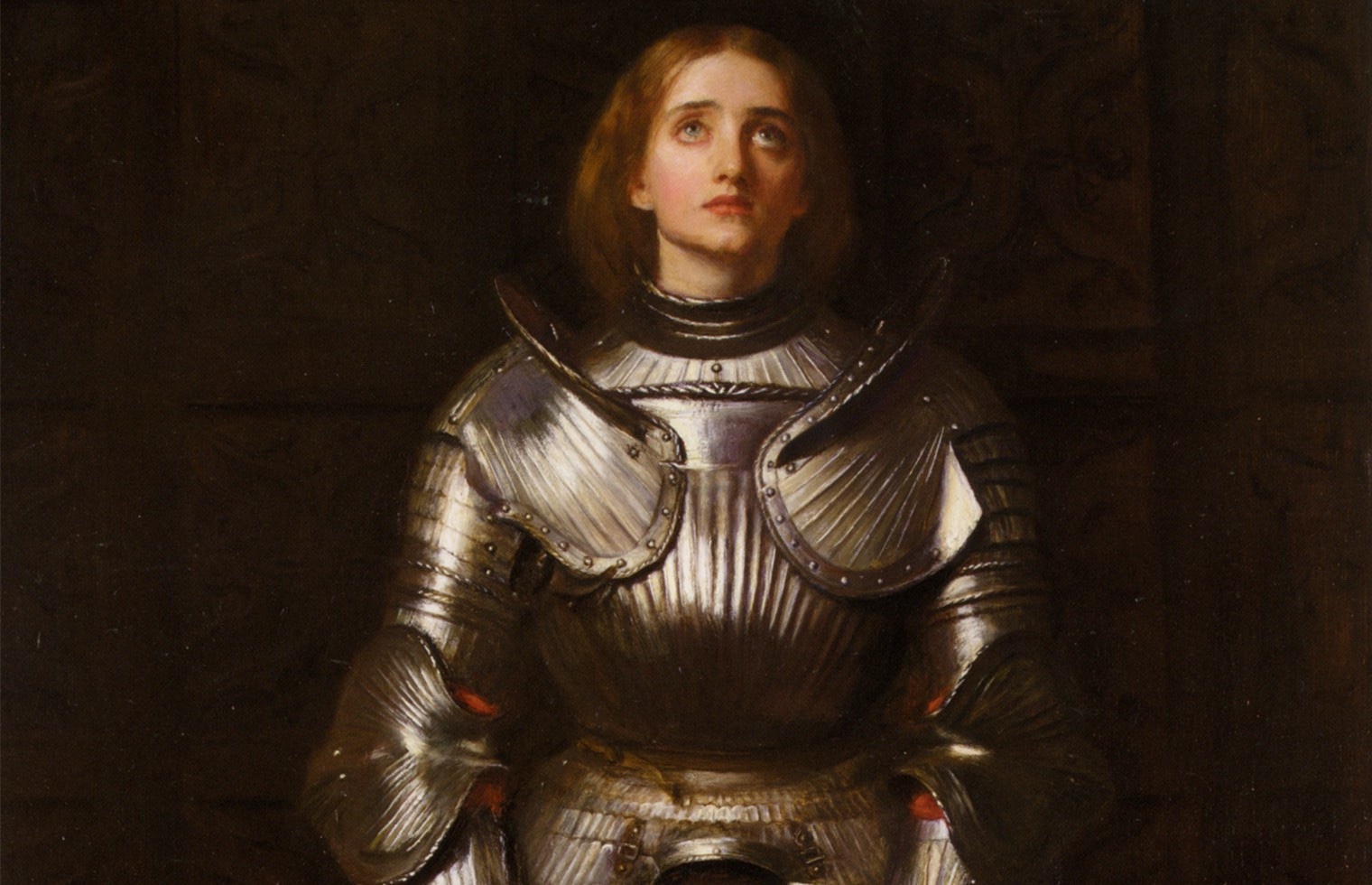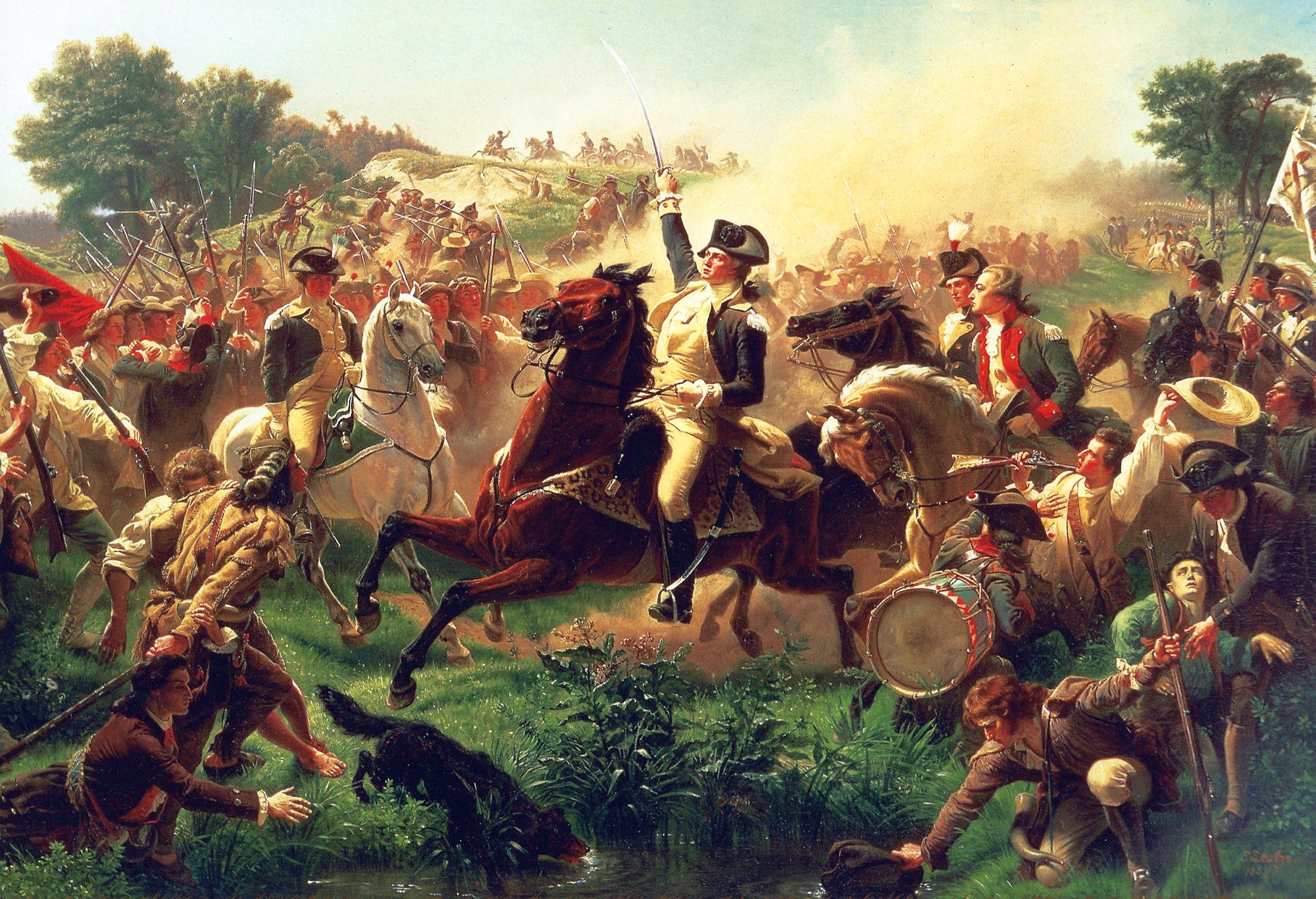an introduction to Hillsdale College’s approach to teaching history in the K-12 years

We have heard the platitude about history a hundred times. “I’ve always thought we learn history to keep from, you know, making the mistakes of the past,” says the barber giving a haircut to the historian. Or, as the modern philosopher George Santayana put it, those who do not learn from the past are “condemned to repeat it.” Condemned? Who would mind repeating a Renaissance in art? Who would not like to see the same understanding of a self-governing civil society living under the rule of law that the founders of this nation possessed present in our elected men and women of today? Who would not revel in a modern Shakespeare rewriting our language-deficient movie scripts? No, the attempt to avoid repeating the mistakes of the past (a notion that assumes most of the past was a mistake) is not the most important reason we study history. It is not even the fourth or fifth most important reason we teach the past to children.
At first, we take an interest in the past quite simply because the past is interesting. What child does not enjoy hearing stories from his grandparents about the way things were “back then?” What boy does not love looking at a book of World War II planes and weapons, sometimes for hours? What girl does not like to read stories about “Ma” and “Pa” and “the girls” living on a farm, whether in a work of fact or of fiction?
The more we know about the past, the more we begin to have questions—questions that constitute a second reason for studying the past. By learning who they were and what they did, we discover who we are. What if the colonists had not won the war? What if “the greatest generation” had not been so great? For we in the present to be able to say that we are Americans and that we are free, we must know something about how that came to be the case. In short, we do not know who we are as a people unless and until we know where we came from, any more than a man with amnesia can know who he is and what is his business in the world.
Learning about the men and women of the past unavoidably brings out our judgment. We cannot but admire Washington—for his courage and his heroism and his humility—just as we cannot but loathe Benedict Arnold—for his treachery and his disloyalty. Just as we admire and sometimes condemn great individuals, so we express judgment about entire peoples and ages. The measure by which we judge or appreciate them accords with their contribution to this human achievement we call civilization.
We both admire and learn from the poetry and heroics and philosophy of the ancient Greeks, the political stability and balance of the Roman republic, the faith of the church fathers, the love of beauty found in the Renaissance artists, the spirit of scientific inquiry characteristic of the Enlightenment, and the industriousness and innovation of that now disparaged age called the Industrial Revolution. Nor are these different ages and emphases incompatible. The young man or woman who has studied and taken on the characteristics of the great ages of Western Civilization would be poetic and philosophic, brave and dignified, faithful and dutiful, aesthetic and scientific, innovative and hard-working. In short, such a person would be a complete man or woman. We study the past in order to see the full range of humanity and, we hope, become more human. Our learning what humanity is—tells us not only who we are but also what we must do, as individuals and as a people, in order to achieve both liberty and happiness in this world.
The reasons human beings are drawn to the past help us understand how we must teach history to the young. Necessarily, we must begin with important dates and places on the map. Progressive ideology has over the past century reduced the necessary study of dates and maps to the status of “mere rote learning.” Yet time and place do matter. Without a time and a place to think about, students cannot possibly orient themselves in the historical moment. In both Jamestown and Plymouth, the time of year the colonists arrived and where they settled accounted in large part for the “starving time” they endured. American ideas of the British Empire were much different in 1776 than they had been in 1763. Anyone who does not think dates are important in children’s lives or that they cannot remember them, should ask them what would happen if their parents forgot Halloween one year, or Christmas, or the children’s birthdays. In the past, schoolmasters referred to chronology and geography as the “handmaidens” of history. Just so, the students of today must master times and places. A student who remembers just nine historical dates per year (one per month in the school calendar) would graduate high school knowing 117 such dates. That is about 110 more than most adults know today.
The teaching of history proper begins with the teaching of stories, mostly in the form of the lives of remarkable human beings. Children should become intimately familiar with the lives of Pericles and Socrates, of both Catos and both Scipios, of Washington and Lincoln. What might be called the Plutarchian approach to history both informs and inspires: by explaining how the world came to be but also by instructing us how we ought to live. Washington and all the founders knew the story of Cincinnatus by heart. Just so, Lincoln grew up reading Weems’s Life of Washington, a work more disparaged than read in our cynical age.
For all the talk these days of “character education” and “problem-solving,” it has occurred to too few to teach biography. The best way to learn the virtues of courage, justice, prudence, and self-government is by reading the deeds of heroes. The best way to train one’s mind in the art of solving seemingly impossible problems is by studying how the great minds have figured out the hardest problems of their age. In other words, strong doses of Washington and of Madison in childhood might go a long way in later life.
Great lives should never disappear in the study of history. Increasingly, though, the young should be taught how to follow the narrative of a nation. For younger children, this teaching will concentrate on representative events and moments that should offer insights into the virtues and struggles of a people: the 300 Spartans at Thermopylae, Hannibal leading Carthaginians and elephants through the Alps, the expeditions and discoveries of the great explorers, the first Thanksgiving in Plymouth, the Boston Tea Party.
Once students grow familiar with the great individuals and important moments in the past, particularly in the upper-elementary school, teachers are then able to pursue a more connected historical narrative. This narrative should always have a theme. That theme is simply, “What were these people trying to achieve, and did they do so?” Throughout the history of the West, and particularly in American history, that theme becomes shaped by the Socratic question, “What is justice?” In short, history concerns more than places and peoples: it necessarily deals in principles. To be more than one darn thing after another, we must know what people were trying to accomplish when they risked their lives, established political systems, or left the places they had always known as home.
In the case of American history, that theme should be crystal clear. America has always stood for something. America is the “land of opportunity,” the new nation “conceived in liberty, and dedicated to the proposition….” America is the “experiment,” as the founding fathers expressed it, of a free, self-governing people pursuing their happiness, under the rule of law. The story of America, then, is the story of the men and women who first settled this land, of the founding generation that won independence and established “a more perfect union,” and of the efforts of subsequent generations to remain true to the timeless principles set forth in the Declaration of Independence.
In addition to studying wars and elections and constitutional conflicts in which any people struggle for survival or gain security or decline and fall, students must learn about the institutions that constitute what the founders called civil society. The study of civil society is not to be confused with the “social history” that has corrupted our modern textbooks and left students utterly bored with the past. Rather, the study of civil society entails the close examination of the necessary institutions of a flourishing people. For example, it is impossible to understand the Puritans without knowing the principles and practices of the Puritan family. Similarly, in a breathtaking few pages of his famous Autobiography, Benjamin Franklin describes his efforts in founding in Philadelphia a library, a fire department, a reliable night watch, a school, and a militia, all done by way of a philosophical society composed of ordinary working men. The larger lesson is one of self-government: If ordinary folk (with the help of a genius like Franklin) are capable of doing these things for themselves, then why do they need royal and aristocratic masters, telling them what to do?
Ultimately, we want students in our schools conversing with the men and women of the past. This is accomplished through the reading of primary documents written by the greatest thinkers and statesmen in history. Such reading is a tall order for the students of today. One of the hardest tasks for a high-school student—or even one in college—to attempt is the reading of a Federalist paper. The sentences are Ciceronian in style and length, with a single one often spanning ten lines on the page. The Federalist authors refer to people and events unknown to the vast majority of readers, and they address complex matters of political life.
The best way to prepare students for such reading and inquiry is, first, to give them the historical education we have described and, second, gradually to build up their reading of writers and speakers from the past. In the early elementary school, students should learn famous quotations: “I came, I saw, I conquered”; “Give me liberty or give me death!”; “Never…was so much owed by so many to so few.” In the upper elementary, students should follow in the footsteps of the founders by writing down and even analyzing such quotations in a journal or “commonplace book.” Students may be gradually introduced to private letters and to speeches, which are usually easier to read than lengthy essays and philosophical tracts. With such practice, by the end of high school they should be fairly at ease with Aristotle.
Students who learn history from the earliest grades—with appropriate attention to significant dates and places, the heroic deeds of great individuals, important historical moments, the rich narrative of Western and American history, and the original words of the ablest philosophers and statesmen—will not rely only on modern media to comprehend the pressing challenges of our age. They will naturally turn to Aristotle and Locke, to Madison and Lincoln, for answers. In short, they will have been instructed how to pursue happiness as human beings and to serve as citizens.
More Posts about History
-
Planning a History Lesson with the Trivium in Mind
In this article, Mr. Battaglia shares a framework for how history teachers might consider the classical Trivium when planning a lesson. … Continue reading Planning a History Lesson with the Trivium in Mind →
-
Using the Land of Hope Textbook – 3 Ideas
In this post, Mr. Battaglia offers three succinct ideas that can help you effectively utilize the Land of Hope textbook in your American History class.… Continue reading Using the Land of Hope Textbook – 3 Ideas →
-
Class Government
When we study the framing of the Constitution in 4th grade, I highlight with my students how important it is that they understand the function of our government. Indeed, we discuss how, sadly, many Americans have not been equipped to really know the system outlined in this foundational…
-
Educating Citizens
The education of citizens is an education in love. … Continue reading Educating Citizens →
-
Freedom, Education, and the American Founding
Once a month we assemble here, and for a few minutes we get to see what our whole community looks like together: from our Kindergarteners up here in the front all the way to our seniors somewhere there in the back, along with our whole faculty and…
-
Goodness Wins
As we set up our notes for the day, my fourth grade students are quick to point out the large empty rectangle in the corner of the chalkboard. I tell them to copy it down and we will talk about it later. At this point in the…
-
A Life Lesson from THE Founder
Very few men have stood as tall as George Washington in their character, nobility, and humility. Among his peers of founding fathers, he is known as THE founder. The one who led his tattered army to victory in the fight for independence. The one who led his…

